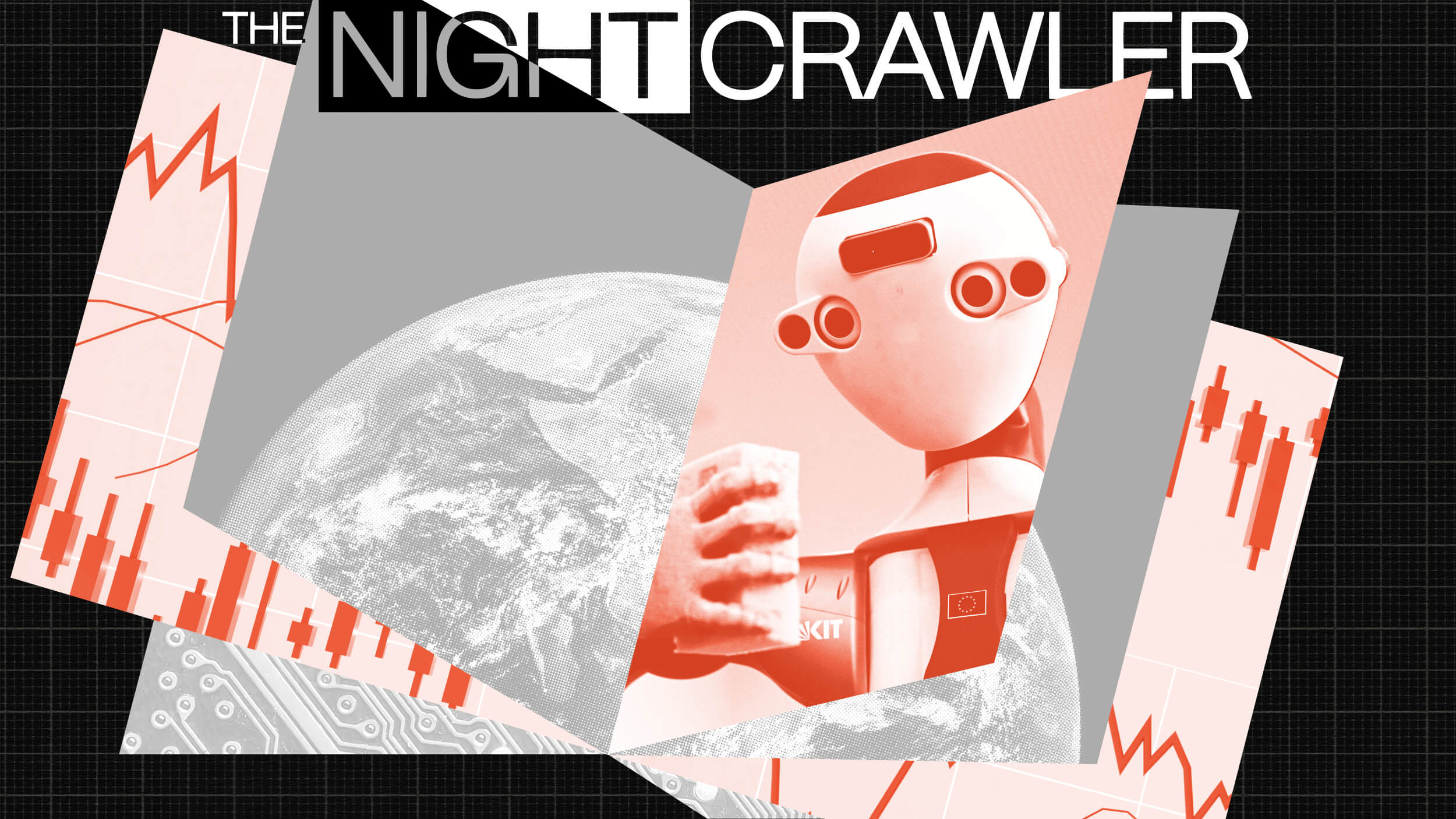A conversation with the co-founder and chairman of LinkedIn, a professional networking site.
Question: How did your childhood shape you?
Reid Hoffman: My greatest influences are actually probably a set of different teachers. And these teachers, most prominently at my high school, but also a few others, helped kind of instill in me, thinking thoughts about how life is meaningful in terms of how we all kind of live in a network of people and how you interact with those people is part of what makes life essentially meaningful and then kind of concepts to think about, how do you add value to other people’s lives? How do they add value to yours? And how do you kind of form a community together in the network?
Question: What’s the moment you’ve felt most successful?
Reid Hoffman: I don’t normally think of like most successful moments, because like most entrepreneurs, I tend to think that however how high of a mountain I’ve climbed, I’m always looking at the next mountain to climb. But probably the most recent kind of highlight was in April 2006 when LinkedIn turned profitable. Because when you turn a company profitable you’ve gone from a company whose days are numbered to a company whose days can be infinite. And giving birth to something that could possibly change the lives of millions of people for possibly decades, hundreds of years, whatever the length of time the run is, is a great feeling.
Question: What’s an ethical dilemma you faced?
Reid Hoffman: Most of the ethical dilemmas that I have faced have all been in the category of, you know, I know something and what’s my obligation to disclose it. So, for example, you see people make a mistake in the contract that you’re making between the businesses and do you disclose it or do you reveal it? And generally speaking, the way that I solve these is I kind of go through a list of, you know, what’s the most, what are the obligations and constituencies and in what order?
So in a BD deal between two companies, where my principal responsibility is to my shareholders and if the other side makes a mistake, you know, that’s their own fault, even if I see it. But, for example, when you’re like hiring an employee, someone that you’re bringing into your family, as a way of doing stuff, like, for example, there’s a mistake in the offer letter or something else, you actually point it out to change them, because it’s part of a long relationship that you’re maintaining into the future.
I find that the interesting challenges, because there’s obvious things where, you know, don’t be unethical, don’t be evil, you know, don’t break the law, don’t do immoral things, those are all straightforward and don’t create ethical dilemmas. The thing that’s interesting is when you actually have multiple interests at stake and you have to kind of navigate your way through it.
Question: What’s a mistake you’ve made during your career?
Reid Hoffman: Probably the biggest mistake that I made personally is I knew early on that I wanted to go into start-ups and creating kind of software that could help change the lives of millions of people. And basically what I did is I kind of went, okay, well, I need a set of titles and I need a checklist of skills, and I ran through all that, and that wasn’t a useless thing, but what I didn’t realize, and, you know, and no one gave me the right advice for doing this, is that actually your network, in essentially, is your career. And the actual, the forming of ties with a group of people around you where they help you grow as a professional, solve problems, get opportunities, and you help them, is actually the constitutive base of the foundation of a strong, modern career. And so as opposed to focusing on titles and kind of a skill list check off, which is still very useful, focus much more on the network.
And so my mistake was, you know, if I had had that realization, I probably would have gone and begged my way into a job at Netscape. Which was at kind of the beginning of my career, was kind of the central energy locus in the valley and that would’ve been a networking decision to go there as opposed to getting a title at a different company.
Question: What’s the worst career advice you’ve ever been given?
Reid Hoffman: The worst career advice, and again, I mean, there’s kind of absurdities, right, because there’s a little bit like The Graduate, you know, plastics as career advice. But the more subtle advice was, you know, a focus on, you know, titles and, you know, kind of prominence in association with brands as opposed to building strong ties with a network of people around you. Because the thing that changes your professional life, your capabilities, your learning, your understanding, your opportunity flow, your ability to make things happen, is the center relationships you have with powerful and effective people around you in the industry, in the activity that you want to be doing.
And so very rarely, and I was never given this advice, people aren’t given this advice, focus on growing and maintaining relationships for your network, and that’s key. And most of the advice tends to be, you know, discover your strengths, build up your resume, get a title, all of that stuff pales in comparison.
Question: How should companies approach cost cutting?
Reid Hoffman: The key issue when you’re looking at cost cutting is to always plan for the future. The first set of questions to ask yourself when you’re doing cost cutting is relatively straightforward, which is, you know, can you use the necessity of cost cutting as an opportunity to do pruning or trimming for projects that aren’t being as successful? But, you know, frequently those are the easy ones. I mean, there’s always some kind of social costs internal to the company, but that’s the easy way of looking at the future.
And then the more difficult is, is if you have to make decisions about resource allocations, about what you can apply to go into the future and the algorithm or the thought analysis that you apply when you look at this kind of cost cutting tends to be, okay, which of these things are most likely to return the company to a very strong position by which it can rigorously invest in its future? And so the projects that make it are the ones that, you know, and those usually involve people in resources, are the ones that you are investing your future in. And that’s the key algorithm to look at and whatever level of depth you need to do, you’re always looking at how do I rebuild this thing into the future?
When you’re doing cost cutting in a business, again, you know, the frame of it, how do you create the most successful thing in the future? So the question about how deep to go into cost cutting goes to, how much do you need to actually, you know, kind of cut the cost in order to make the strongest viable company in the future? And when you ask the question, how deep is enough? It’s, the company needs to get to a point where it is profitable enough that it continues to invest in its future in a near-term environment and needs to not risk going out of business. Or, you know, diminish that risk as much as possible.
So you know that you’ve gotten to the, the kind of floor of cost cutting when from here, you can build back to a strong platform of your business in order to grow into the future, and you’re taking de minimis risk in terms of what, you know, for example, like if the company might risk going out of business due to some risk in that particular business. And those are the tests that you apply to knowing that you’re at the base.
Question: How do you manage risk in this environment?
Reid Hoffman: Managing risk is a key variable, frankly, all aspects of life, business is just one of them, and one of the things that most people do in terms of managing risk, that’s actually bad thinking, is they think they can manage risk to zero. Everything has some risk to it. You know, you drive your car down the street, a drunk driver may hit you. So what you’re doing is you’re actually trying to get to an acceptable level of risk.
Now, in economic crises times, the kind of things you’re looking at is it’s generally harder to get capital, revenue growth may be more, revenue lines may be unstable or growth may be less easy to predict that you’re going to get to. And so what you do is you take a certain conservative approach of when, as all entrepreneurs should do, you plan for both good luck and bad luck, you put extra time on, “Okay, if I have bad luck, what do I do about that?” And that doesn’t mean that, for example, you plan that the bad luck is certainly going to happen, but you’re ready to adjust your strategy, iterate, interact, and presume that you have bad luck.
So in, for example, a financing circumstance, what if financing is much more difficult to get than you think, do you have the contingent monitoring points and the contingent, you know, like, okay, here’s what we can do in order to keep this company going and build it into the future, even if financing is difficult.
Well, well-run companies always have a focus on growth and the two lines, which includes profit. The key thing during, I think, tough times, is to make sure that you’ve covered the basis for when something, you know, essentially things taking longer, bad luck, adversity, other kinds of circumstances may occur. Make sure that you can monitor to win, it’s potentially, you know, something is going to go wrong, monitor early enough, and then take appropriate action to essentially counteract that or shift your strategy or plan, even if in fact something is not working out as well as it is. Because what happens, especially during tough times, is, during normal times or boom times, there are some parts of the business that are going to so well, that that can cover for weakness and other parts of the business. What happens during recessions, is you have less windfalls just helping you cover mistakes. You have to be more careful about not making mistakes.
There are opportunities that you get during crises times. Crises times are a great time to start a business. Basically many of the huge, significant companies, you know, Apple, Microsoft, Burger King, have all been started during economic recessions. And the reason is, is if you can pull it all together and get the new thing going and get it to kind of a good, new idea out there, because all other businesses are generally focused on maintaining their knitting, you have a great entrepreneurial ability.
Now, the same thing is true of businesses, if you can get your knitting kind of focused, then it’s also a very good time to expand your business. And so, you know, you need to be, you know, disciplined to be about it, you need to be effective about it, you need to be, you know, deploying disruptive technologies or business models in order to get the kind of growth and the new wave in. But economic tough times are great times to be investing in the future.
Question: How should you deal with competition?
Reid Hoffman: Times of economic crises can change what the competitive landscape looks like, because when, for example, you have boom times, capital is easy to come by, growth is easy, sometimes what you focus on is, you know, how to accelerate in the boom.
During economic crises, the question is, the companies that come out of, you know, that are sailing through that with the best liquidity, both assets on the balance sheet, making money, ability to grow their businesses, get a disproportionate competitive advantage.
So one of the really key things to look at in terms of crafting strategy when you’re in an economic crises is how do you maximize essentially your liquidity position? Your ability to both take kind of profits and revenues and business and then convert that into a stronger lead. And so those companies that can do that can actually, you know, get a march on their competitors.
Question: How does a company position itself to be profitable in future?
Reid Hoffman: The key thing for all businesses, and especially of course technology businesses or businesses that employ technology as a key kind of strategic advantage, is you always have to be investing in the future. Technological change comes at accelerating rights. There are such things as, you know, Moore’s law, and that sort of thing, and that kind of bubbles up into kind of more feature sets and competitive ability.
So the key thing is to invest in the future and what that means is when you’re deploying technology or you’re a technology business, is to make sure that you’re keeping on the innovation cycle, where you’re both creating and adopting the new business practices, and the new techniques in order to drive your business the right way.
Now, a really key thing in terms of doing that is staying in touch with the people in your network and in your industry to know what the benchmark is, to know what you should be doing in terms of, you know, what are the tools and techniques available and to be revving them as you go. And that is essential for maintaining a competitive edge and being successful.
Question: How do you respond to demands for long-term sustainability?
Reid Hoffman: This question is on sustainability, like is it, okay, so, if your business is in kind of serious trouble, you have to make a decision about whether or not you have -- it’s almost like an investor or venture capitalist’s decision, can you take the assets from where you are and get to a place where you’re investing in the future? And if you’re not, then you need to look for, you know, essentially, you know, how do you get the business to a place where it can invest in the future? One is sell the business, another is getting strong financing and kind of reinvest in the business, is a way of doing that.
The key thing in any kind of guiding of the business is how do you create a strong organization that is kind of accelerating into the future. And when you’re in trouble, the question is, what are the techniques that you can, you know, trim, refinance, sell, et cetera, in order to get this business back to that characteristic.
Question: How do CEOs keep their heads in the game?
Reid Hoffman: The CEO’s job is always about leadership. It’s about leadership in a vision, in terms of where you’re going, it’s about making sure that you have the right organization and staff, and that you have kind of clearly communicated what some of the plays are and what some of the goals are in terms of the business and how do you organize together in order to make that happen. So the key thing for a CEO to keep their head in the game is recognize that there’s turbulent times, plan for, you know, bad luck as well as good luck, keep people focused on what the key, you know, business wins are, and you know, provide the energy that people always need in order to, you know, to go into battle because, you know, work is hard and go into work and do that well. And provide a good leadership beacon for that. In other words, it’s the same thing that makes good leadership in any other time.
Question: How do you motivate your staff in a downturn?
Reid Hoffman: In crisis times, it’s actually not more difficult to motivate your staff, because everyone gets much more focused on how they control their own economic destiny. So, what you do is you have clear communication, which is always a good leadership technique, and you talk about how you can build something good and strong in the future, and how you can work together in order to do that.
And everyone, you know, during crises times, is much more focused on, okay, how do we get the boat completely seaworthy, sailing along well, and everything going well? And so as long as you’re communicating how the general strategy of the company and how the work they can do to add to that and to make that more successful and the thing that they can contribute to that, that is generally very motivating for employees in crisis times.
Topic: Layoffs
Reid Hoffman: So, if you have to conduct layoffs, which is always a regrettable thing, no one likes doing them, there’s kind of three things that are very important. One is to communicate well with your employees in order to help them understand why it is you’re doing, and how. Second is to treat the, you know, make sure that the employees who are part of the go forward, understand kind of what happened and are not, like the ground doesn’t keep moving. It’s like, okay, we did that, we’re moving forward, here we go. And then for the employees that you unfortunately have to let go, try to provide as much support for them as possible. So, for example, we’ve seen a lot of companies kind of using packages on LinkedIn to help people find other kinds of opportunities that would be good for them.
Companies hire a lot during boom times because they’re trying to adequately accelerate into the future. Because in our boom times, everything is growing, usually, you know, the kind of things that come to mind are Wild, Wild, West, or land grabs, you know, these sorts of things, in order to make something, you know, kind of to grow into the future and to get all the growth that you need to have. So you tend to hire a lot because you’re running fast to the future.
So, the key thing that I find that when you’re kind of in boom times and you’re hiring bunches, if you can hire, you know, always maintain very high standards and even if you, you know, can’t find enough of, you know, what is typically called A players, then don’t hire the people. All right? So, you know, use that as a way of standards.
And the second thing is, generally speaking, to make sure a certain percentage of the people that you’re hiring are generalists so that you can be, kind of reconfigured in the workforce pretty easily.
Now, boom and bust cycles are very difficult for businesses because you’re hiring a bunch because you’re planning for the future. And if the future is going to be very big, you need to hire people, or suddenly you go to boom to bust, then all of a sudden, you’re kind of battening down the hatches and trying to sail, you know, through the storm, it’s a different thing.
So part of it is making good decisions about, well, how long is a boom cycle going to be, you know, don’t plan on it going forever, what happens if it stops going, is your hiring plan still make sense within that context, that sort of thing, are all sorts of tests that you apply to yourself as a way of making good strategic decision about hiring.
Question: How can social networking sites help businesses?
Reid Hoffman: So, most people when they think of kind of professional networking and social networking sites, they think of recruiting. And recruiting is obviously a very strong utility, both for people looking for jobs in companies, and companies looking to get, you know, high quality talent into the company. But in addition to that, these sites, you know, mostly on the professional networking, really helps with everything from, for example, if an individual professional is reaching out to other professionals to know, you know, what are good technologies, tools, techniques, in order to stay current in their professionalism and their job, finding experts in order to help solve problems, say for example, a distribution problem.
So, you know, like one of the success cases at LinkedIn was this guy figuring out how to move 12 million tons of cement from, you know, China to Dubai. You know, getting all of that kind of network competitive intelligence for every individual professional as a way to how to execute your job is one of the really key things for a good competitive advantage.
When thinking about how to deploy kind of professional and social networking into your business, it’s really not a question of if, it’s a question of when. And the reason is, just think about the fact that those businesses that adopt new technologies to operate efficiently and use them to get a competitive edge are the businesses that in fact, you know, it becomes one more competitive advantage. Whether it’s a fax machine or a mobile phone or a new way of doing financing or any of these things, you know, these are key things to do.
So, the key question is not to try to look for excuses as to, “Oh, yeah, yeah, yeah, it’s a fad, I’ll put it off,” but to think about what do you think will be actually there in the future and then arrive at the future early in order to establish a competitive advantage against your competitors. And that’s both true as an individual, because every individual is essentially now a small business and entrepreneur and as a business, as a collection of businesses. And these are, I think this is a key thing of like which piece of these technology do I need to adopt and then adopt them early in order to get a competitive advantage.
Question: Can social networking ever be detrimental to businesses?
Reid Hoffman: You know, people generally worry about social networking more than they need to. In kind of consumer internet investing and on social and professional networks, I kind of look at time spending and time efficiency. You know, time saving sites. So on time spending sites, things where you play lots of games or that sort of thing, you might worry about a productivity loss if people are spending a lot of time doing that. So if there’s a lot of kind of addictive gaming going on during work hours, that won’t be as helpful to you.
Whereas things that help you get your job done better or help you get, you know, stay informed, you know, know what current, you know, kind of professional success is, those can be helpful.
So the risks really kind of come down to, are there ways that this will essentially end up taking a lot of time from employees as opposed to giving them leverage and scale.
Recorded on August 11, 2009





